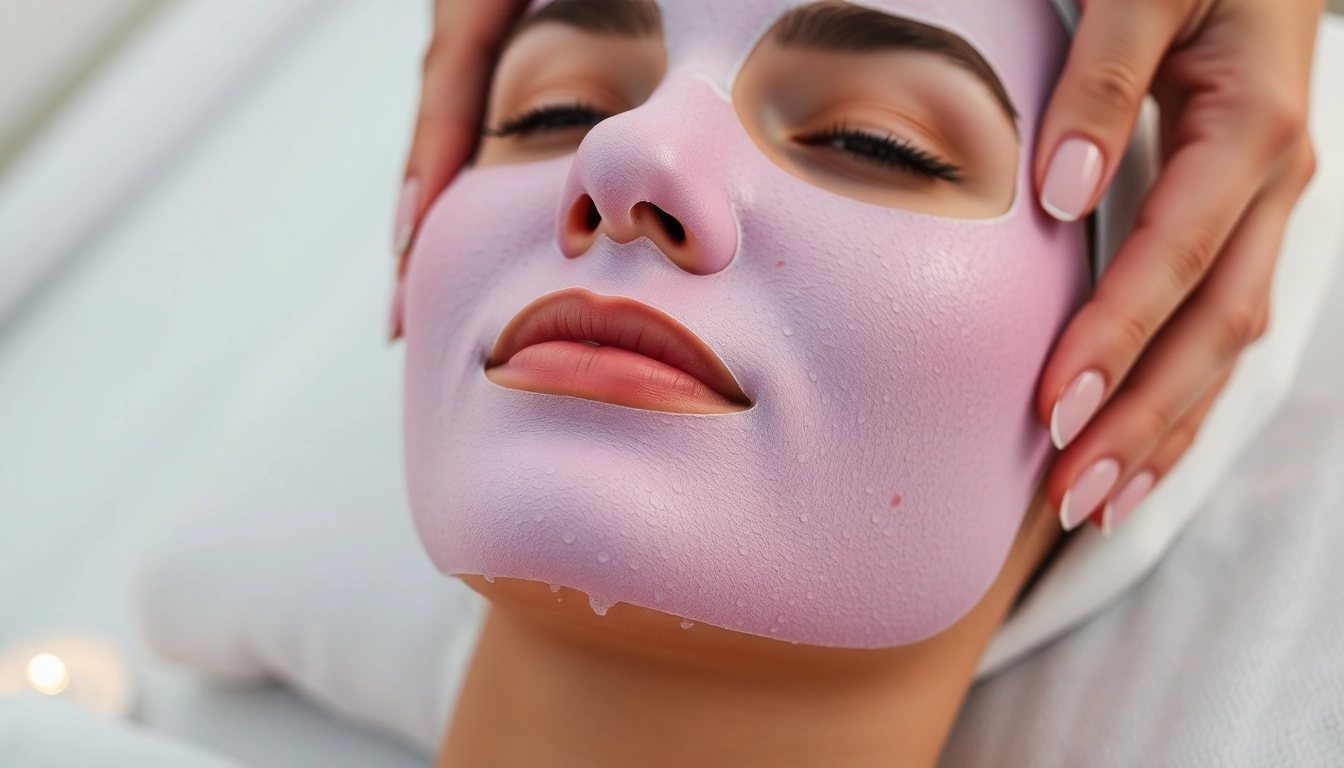Revitalize Your Skin: The Power of Sheet Masks for Every Skin Type
Sheet masks have surged in popularity, offering a convenient way to deliver intensive hydration and nutrients directly to the skin. From busy professionals to skincare enthusiasts, these masks have found their place in beauty routines around the globe. They provide a spa-like experience at home, and when selected correctly, they can address various skin concerns effectively. If you’re curious about the many benefits and uses of sheet masks, you’ve come to the right place. In this comprehensive guide, we will explore everything you need to know about sheet masks, including their benefits, how to select the right one for your skin type, proper application techniques, and future trends in sheet masks. For those looking to explore the world of sheet masks, read on!
Understanding Sheet Masks and Their Benefits
What Are Sheet Masks?
Sheet masks are face-shaped sheets made from various materials like cotton, paper, or gel, infused with serums full of skin-loving ingredients. These masks are designed to fit snugly over your facial contours, allowing for maximum absorption of the active ingredients. When applied, they create a barrier that traps moisture and enables the essence to penetrate deeper into the skin. Typically, sheet masks are used as a part of a skincare routine to provide hydration, brighten the complexion, and target specific skin concerns.
Top Benefits of Using Sheet Masks
Sheet masks offer numerous benefits that make them a popular choice in skincare regimens:
- Hydration: One of the primary functions of sheet masks is to provide intense moisture to the skin, making it feel supple and revitalized.
- Convenience: Sheet masks are travel-friendly and easy to use, requiring no mixing or mess. Just apply and relax.
- Treat Specific Concerns: Whether it’s dryness, dullness, wrinkles, or acne, there’s a sheet mask formulated to address each of these issues.
- Time-Saving: Most masks only need to be on for 10 to 20 minutes, allowing you to incorporate them easily into your daily routine.
- Spa-Like Experience: Using a sheet mask can feel like a mini spa treatment, promoting relaxation and self-care.
Different Ingredients in Sheet Masks
Sheet masks are often infused with a variety of ingredients tailored to target specific skin concerns:
- Hyaluronic Acid: Known for its incredible moisture-retaining capabilities, this ingredient is excellent for hydration.
- Niacinamide: A form of Vitamin B3 that helps with skin tone, texture, and redness.
- Vitamin C: Brightens the skin and contributes to fading dark spots.
- Aloe Vera: Soothes and calms redness, making it perfect for sensitive skin.
- Peptides: Help to stimulate collagen production and reduce the appearance of wrinkles.
How to Choose the Right Sheet Mask
Identifying Your Skin Type
Before selecting a sheet mask, it’s crucial to understand your skin type. Is it oily, dry, sensitive, or a combination? Here’s a quick guide:
- Dry Skin: Look for hydrating masks that contain ingredients like hyaluronic acid or glycerin.
- Oily Skin: Opt for masks that include charcoal or clay to absorb excess oil.
- Combination Skin: A balanced mask with both moisturizing and mattifying properties may be most beneficial.
- Sensitive Skin: Seek out gentle, fragrance-free options with soothing ingredients like chamomile or aloe vera.
Selecting Ingredients for Your Needs
Once you’ve identified your skin type, the next step is to choose a mask based on your specific concerns. For example:
- If you’re experiencing dullness, opt for masks with Vitamin C or fruit extracts.
- For acne-prone skin, look for tea tree oil or salicylic acid.
- For aging skin, choose masks that contain peptides or retinol.
Best Sheet Masks on the Market
There are numerous sheet masks available today, but some have gained widespread recognition for their quality and results:
- Dr. Jart+ Power Sheet Mask: Known for its innovative formulations and effective results.
- SK-II Facial Treatment Mask: Infused with Pitera to deliver hydration and brightening benefits.
- Innisfree My Real Squeeze Mask: Offers a range of botanical ingredients tailored to various concerns.
- Sephora Collection Mask: Affordable options that cater to diverse needs.
Application Techniques for Maximum Effectiveness
Steps to Properly Apply a Sheet Mask
For optimal results, follow these steps when applying your sheet mask:
- Cleanse your face: Start with a clean slate by washing your face to remove any impurities.
- Tone: Apply a toner if your routine includes it, as this can help to prepare your skin for better absorption.
- Unfold the mask: Carefully remove the mask from its packaging and unfold it. Align it with your facial features.
- Press it onto your face: Gently press the mask onto your skin, ensuring it adheres well.
- Relax: Sit back and relax for 10-20 minutes, allowing the ingredients to penetrate your skin.
- Remove the mask: After the recommended time, gently peel off the mask and discard it.
- Follow up: Massage any leftover essence into your skin, and apply your moisturizer.
Common Mistakes to Avoid
While using sheet masks is straightforward, there are several common pitfalls to watch out for:
- Applying on unclean skin can inhibit absorption.
- Leaving the mask on for too long can cause the skin to become dehydrated as the mask starts to dry.
- Overusing sheet masks can lead to irritation, especially for sensitive skin.
How Long Should You Leave It On?
Most sheet masks are designed to be left on for 10 to 20 minutes. Always read the instructions provided with your specific mask, but usually, 15 minutes is an ideal duration to yield the maximum benefits without causing the mask to dry out.
Integrating Sheet Masks into Your Skincare Routine
Timing Your Sheet Mask Usage
Incorporating sheet masks into your skincare routine can be done conveniently. They can be used:
- Weekly as a treatment on designated skincare days.
- Before a big event to prep your skin for makeup.
- In your nighttime routine for added moisture.
Pairing with Other Skincare Products
To maximize the effectiveness of sheet masks, consider pairing them with other skincare products:
- Use a good cleanser and toner beforehand.
- Follow up with a serum that complements the mask ingredients.
- Complete with a nourishing moisturizer to lock in hydration.
How Often Should You Use Sheet Masks?
The frequency of use largely depends on your skin’s needs and the mask’s ingredients. As a general recommendation:
- For oily or problematic skin: 1-2 times a week.
- For dry or mature skin: 2-3 times a week may be beneficial.
- For normal skin: Once a week is usually sufficient.
Exploring the Future of Sheet Masks
Innovations in Sheet Mask Technology
The sheet mask market is continuously evolving. Innovations in material and formulation are designed to enhance effectiveness:
- 3D and bio-cellulose masks contour better to the face for improved moisture retention.
- Smart masks that contain sensors to provide feedback on skin conditions.
- Customized masks available where users can select ingredients based on their current skin needs.
Sustainable Sheet Mask Options
As sustainability becomes a priority for consumers, many brands are turning to eco-friendly materials for their masks:
- Bamboo or organic cotton masks are biodegradable.
- Brands are focusing on recyclable packaging to minimize waste.
- Development of formulations that are free from harmful chemicals.
Consumer Trends in Sheet Masks
Understanding consumer trends is crucial as the market grows. Some current trends include:
- Arise in multi-masking where users apply different masks on various parts of the face.
- Increased interest in cruelty-free and vegan sheet masks.
- Demand for masks with wellness benefits, such as calming aromatherapy.














Post Comment